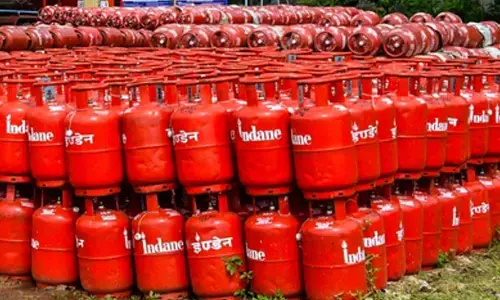Can water treatment methods kill COVID-19 virus?

As some coronavirus, including the deadly SARS-CoV-19 one responsible for the COVID-19 pandemic, can remain infectious for days -- or even longer in sewage and drinking water
As some coronavirus, including the deadly SARS-CoV-19 one responsible for the COVID-19 pandemic, can remain infectious for days -- or even longer in sewage and drinking water -- researchers have called for more testing to determine whether water treatment methods are effective in killing coronavirus.
The virus can be transported in microscopic water droplets, or aerosols, which enter the air through evaporation or spray, the researchers wrote in an editorial for Environmental Science: Water Research & Technology, a leading environmental journal.
The researchers -- Haizhou Liu, Associate Professor of Chemical and Environmental Engineering at the University of California, Riverside in the US; and Professor Vincenzo Naddeo, Director of the Sanitary Environmental Engineering Division at the University of Salerno in Italy -- suggest governments of developed countries must support and finance water and sanitation systems wherever they are needed.
"The ongoing COVID-19 pandemic highlights the urgent need for a careful evaluation of the fate and control of this contagious virus in the environment," Liu said.
"Environmental engineers like us are well positioned to apply our expertise to address these needs with international collaborations to protect public health," Liu said.
During a 2003 SARS outbreak in Hong Kong, a sewage leak caused a cluster of cases through aerosolisation.
Though no known cases of COVID-19 have been caused by sewage leaks, the novel coronavirus is closely related to the one that causes SARS, and infection via this route could be possible.
In fact, traces of the novel coronavirus have been found in some wastewater treatment plants in the Netherlands, according to reports.
Fortunately, most water treatment routines are thought to kill or remove coronaviruses effectively in both drinking and wastewater.
Oxidation with hypochlorous acid or peracetic acid, and inactivation by ultraviolet irradiation, as well as chlorine, are thought to kill coronaviruses.
In wastewater treatment plants that use membrane bioreactors, the synergistic effects of beneficial microorganisms and the physical separation of suspended solids filter out viruses concentrated in the sewage sludge.
Liu and Naddeo cautioned, however, that most of these methods have not been studied for effectiveness specifically on SARS-CoV-19 and other coronaviruses, and they have called for additional research.
They also suggested upgrading existing water and wastewater treatment infrastructure in outbreak hot spots, which possibly receive coronavirus from places such as hospitals, community clinics, and nursing homes.
For example, energy-efficient, light-emitting, diode-based, ultraviolet point-of-use systems could disinfect water before it enters the public treatment system.
Potable water-reuse systems, which purify wastewater back into tap water, also need thorough investigation for coronavirus removal, and possibly new regulatory standards for disinfection, the researchers wrote.
The extent to which viruses can colonise biofilms is also not yet known. Biofilms are thin, slimy bacterial growths that line the pipes of many ageing drinking water systems. Better monitoring of coronaviruses in biofilms might be necessary to prevent outbreaks.
If the novel coronavirus could colonise biofilms that line drinking water systems, showerheads might become a possible source of aerosolised transmission.


















